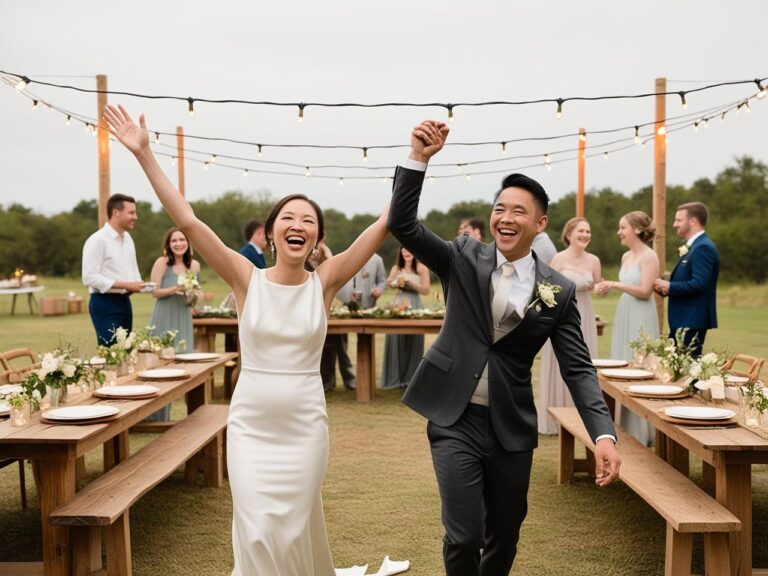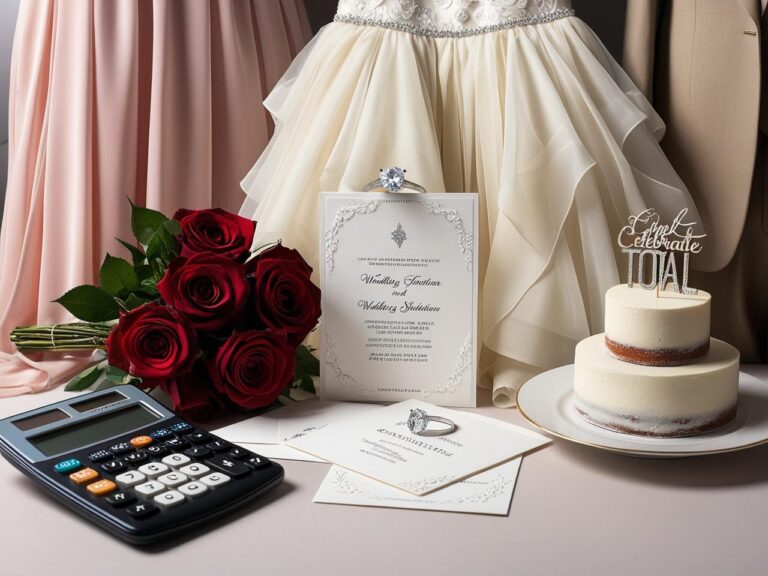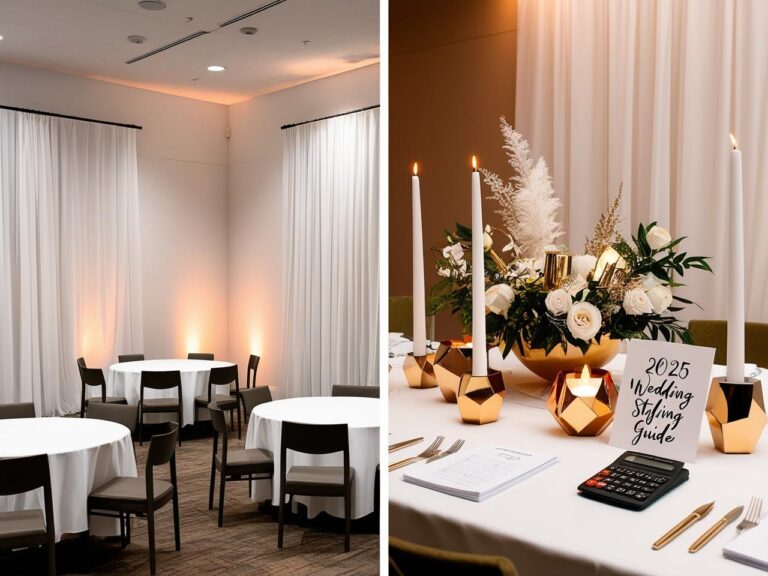Modern Wedding Expenses: Who Pays for What
This article includes references to The Knot’s 2024 Wedding Survey, Census Bureau data, and insights from wedding planners and financial advisors to support the claims made.
Planning a wedding involves countless decisions, but perhaps none as potentially awkward as determining who pays for what. Traditional wedding etiquette once dictated clear financial responsibilities, but modern couples are navigating a landscape where customs have evolved significantly. Whether you’re embracing time-honored traditions or forging your own path, understanding contemporary expectations around wedding expenses can help reduce stress and potential conflicts during the planning process.
The Evolution of Wedding Payment Traditions
Historically, wedding expenses followed strict guidelines: the bride’s family covered the ceremony and reception while the groom’s family handled the rehearsal dinner and honeymoon. These traditions stemmed from the concept of a “dowry,” where the bride’s family demonstrated their ability to contribute to the new union.
According to a comprehensive study by The Knot’s 2024 Wedding Survey, today’s financial landscape looks dramatically different:
- 49% of couples pay for their wedding entirely themselves
- 28% share costs with both sets of parents
- 16% have one set of parents covering expenses
- 7% have various arrangements with extended family members contributing
This shift reflects changing social dynamics, couples marrying later in life with established careers, and evolving gender roles that have reshaped how wedding expenses are approached.
Choosing the perfect wedding date is one of the first steps in planning your dream wedding. For a detailed walkthrough, check out our Step-by-Step Guide to Choosing the Perfect Wedding Date .
Modern Approaches to Wedding Expense Division
The Collaborative Method
Many couples now adopt what wedding planners call the “percentage approach,” where all involved parties contribute based on their financial capability rather than prescribed traditions. Wedding planner Sarah Richards of Event Elegance notes, “We’re seeing more families establish a wedding budget committee where everyone sits down to discuss what they can realistically contribute before planning begins.”
This approach typically involves:
- Open communication about financial boundaries
- Written agreements to prevent misunderstandings
- Regular budget check-ins throughout the planning process
- Respect for contribution limits regardless of traditional expectations
The Independent Couple Approach
With the average age of first marriage now at 32 for women and 34 for men (according to Census Bureau data), many couples have established financial independence and prefer to fund their celebrations themselves. This provides complete control over decisions without family input but requires realistic budgeting and potentially longer engagement periods to save adequately.
Traditional Expense Breakdown with Modern Considerations
While many couples create custom arrangements, knowing traditional allocations can provide a starting point for discussions. Here’s a comprehensive breakdown of wedding expenses and their traditional assignments, updated with modern considerations:
Traditionally Bride’s Family Responsibilities
Ceremony Costs:
- Venue rental
- Decorations and flowers
- Wedding planner fees
- Photography and videography
- Music/entertainment
Reception Expenses:
- Venue
- Catering and bar service
- Wedding cake
- Entertainment
- Decorations
Traditionally Groom’s Family Responsibilities
- Rehearsal dinner
- Marriage license
- Officiant fees
- Bride’s bouquet and boutonnieres
- Honeymoon (sometimes shared with the couple)
Traditional Couple’s Responsibilities
- Engagement and wedding rings
- Wedding attire
- Gifts for wedding party
- Accommodations for wedding night
For a comprehensive approach to organizing your perfect celebration, check out our Ultimate Wedding Planning Guide 2025 that covers everything from budgeting to day-of coordination.
Modern Wedding Expense Distribution in Practice
Today’s couples typically approach expenses with more flexibility. Financial advisor Melissa Chen observes, “The most successful arrangements acknowledge both tradition and practicality. The key is transparent communication about expectations and limitations.”
Modern approaches often include:
The Thirds Approach
Some families divide major expenses into thirds between the couple and both sets of parents, with each contributing equally to the total budget rather than specific items.
The Priority Investment Method
Each contributing party selects specific elements that matter most to them. For example, if excellent food is important to the bride’s parents, they might cover catering costs while the groom’s music-loving family handles the band.
The Financial Capability Model
Contributions are based entirely on what each party can afford rather than prescribed responsibilities, acknowledging that financial situations vary widely among families.
Having the Money Conversation
Wedding planner Thomas Wilson recommends scheduling a dedicated “money meeting” before any vendors are contacted:
“Set aside time specifically to discuss finances with all potential contributors. Create a collaborative spreadsheet that everyone can access showing estimated costs, actual quotes, and who’s covering what. This transparency prevents misunderstandings later.”
Key points to address during these discussions include:
- Overall budget expectations
- Non-negotiable elements for each contributing party
- Contingency plans for unexpected expenses
- Payment logistics and timing
- Decision-making authority (does financial contribution equal input on choices?)
Before having your first money meeting, consider using our interactive Wedding Budget Calculator to get a realistic sense of typical costs in your region.
Etiquette for Special Situations
Second Marriages
For second marriages, especially when couples are older, the traditional expectation is that the couple covers all expenses themselves. However, parents who wish to contribute may still do so, typically with specific items rather than overall hosting responsibilities.
Same-Sex Weddings
Same-sex couples have created new traditions that often involve equal contributions from both partners’ families or the couple handling expenses themselves. What matters most is finding an arrangement that feels comfortable and equitable for all involved.
Cultural Considerations
Many cultural traditions have specific expectations regarding wedding finances. For instance:
- In many South Asian traditions, the bride’s family traditionally hosts the wedding while the groom’s family covers pre-wedding celebrations
- Jewish traditions often involve both families sharing costs more equally
- Chinese weddings may include significant monetary gifts from family members that help offset expenses
Reducing Wedding Costs for All Contributors
Regardless of who’s paying, implementing cost-saving strategies benefits everyone involved:
- Consider off-season wedding dates (January through March typically offer the best venue rates)
- Explore Friday evening or Sunday afternoon celebrations instead of Saturday
- Limit the guest list, as per-person costs typically constitute 40-50% of the total budget
- Choose in-season, locally available flowers
- Select venues that allow outside catering and beverage service
FAQ About Wedding Payment Etiquette
Who typically pays for the engagement party?
Traditionally, the engagement party is hosted and paid for by the bride’s parents. However, in modern practice, it’s increasingly common for either set of parents, both families together, or even close friends to host this celebration. Some couples also choose to host their own engagement parties, especially if they live far from family.
Is it appropriate to ask parents how much they plan to contribute?
Yes, but approach the conversation respectfully. Instead of directly asking “How much will you give us?” try: “We’re starting to plan our wedding budget and wondering if you’d like to be involved financially. If so, would you be comfortable sharing what you might contribute so we can plan accordingly?” This acknowledges their agency in the decision.
If someone pays for a specific element, do they get final say in decisions about it?
This should be clearly established when financial arrangements are made. Most wedding planners recommend separating financial contributions from creative control, but some contributors may feel entitled to input. Having an explicit conversation about expectations regarding decision-making prevents conflicts later.
How should couples handle unexpected wedding expenses?
Every wedding budget should include a 10-15% contingency fund for unforeseen costs. Decide in advance who will cover these expenses if they arise. Some couples split unexpected costs proportionally among all contributors, while others handle them themselves to maintain planning autonomy.
What’s the etiquette for handling wedding costs when families have significantly different financial situations?
This requires sensitivity and clear communication. Focus conversations on what each party is comfortable contributing rather than equal dollar amounts. Sometimes the family with greater financial means will offer more, but this should never be assumed or requested. Remember that meaningful contributions come in many forms, including time, skills, and emotional support.
Planning a wedding can feel overwhelming, but hiring a professional can make all the difference. Discover why enlisting a wedding planner was a game-changer in our article: Why Hiring a Wedding Planner Was the Best Decision Ever .
Conclusion
Today’s wedding expense distribution reflects the diversity of modern relationships and families. While traditional guidelines provide a framework, most couples create customized arrangements that honor their unique circumstances and relationships. The most successful financial plans prioritize open communication, mutual respect, and realistic expectations over rigid adherence to convention.
Ultimately, wedding expenses should never overshadow the celebration itself. By approaching financial conversations with clarity and compassion, couples and their families can create meaningful celebrations that honor relationships without creating unnecessary financial strain. The most memorable weddings focus not on who paid for what, but on the commitment being celebrated and the community gathered to witness it.






